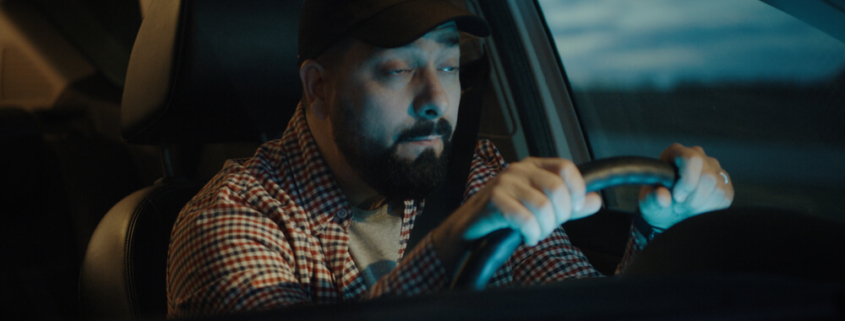How Night Driving Contributes to Drowsiness
When an individual operating a vehicle is too fatigued to stay alert, it is known as “drowsy driving.” Consequently, the motorist may have reduced vigilance, delayed reaction times, impaired thinking, and may even fall asleep when driving.
Drowsy driving usually goes unreported when law enforcement officers fill out an accident report. It is challenging to detect drowsy driving unless the motorist admits to falling asleep.
The Dangers of Drowsy Driving
According to a study by the AAA Foundation, an individual is at a higher risk for an accident with inadequate sleep. If a person sleeps for less than four hours at night, they are 12 times more likely to be involved in a auto collision.
Research indicates that teenagers should get eight to ten hours of sleep every night, but a majority of teenagers do not get adequate sleep. One study reports that a mere 15 percent of teens reported getting 8 ½ hours of sleep on school nights. The risk of falling asleep when behind the wheel is higher for young drivers.
Fatigue or sleepiness can lead to the following:
- Impaired judgment, slower reaction time, and compromised vision
- Challenges with short-term memory and processing of information
- Reduced performance, motivation, and vigilance
- Increased aggressive behaviors and moodiness
In a 2015 study, it was found that people who get under two hours of sleep in the previous 24 hours are too sleep-deprived to operate a vehicle.
A recent survey indicates that teenagers report having an “always-on lifestyle” and being “reluctant to miss out” as a contributory factor to drowsy driving as they get under six hours of sleep every night. Following are some key highlights of the survey:
- 70 percent of the teenagers surveyed admitted to driving when tired
- 50 percent confessed to actually or almost falling asleep behind the wheel due to the following reasons:
- A busy routine: 43 percent
- Staying up late for schoolwork: 32 percent
- Staying up late for social engagements: 24 percent
- Working late hours during the week: 20 percent
- Being exhausted or hungover from drinking/socializing the previous night: 10 percent
Facts on Drowsy Driving
Time
Crashes occur most commonly early in the morning and late at night, as this is the natural sleep period of the body. Also, sleepiness can peak mid-afternoon. Older adults are more prone to have a drowsy-driving crash in the middle of the afternoon.
Speed
Serious drowsy driving crashes occur most frequently at high speeds on freeways and other major roadways. But drowsy driving crashes can also take place at slower speeds.
Driver Behavior
Sometimes drowsy motorists make no effort to halt or avoid a collision. In many cases, at least one motor vehicle may be forced to veer off the road.
Risk Factors
You can be at risk of drowsy driving with even a single night of poor sleep or sleep deprivation. However, some individuals are at an increased risk of drowsy driving in comparison to others.
Untreated Sleep Conditions
Many individuals with narcolepsy or obstructive sleep apnea remain untreated. Severe daytime drowsiness is a common side effect of sleep apnea. People with narcolepsy can fall asleep suddenly. Drivers with these sleep disorders are at a higher risk for drowsy driving.
Shift Work
People working graveyard shifts or rotating shifts are susceptible to drowsy driving, including doctors, nurses, truckers, police officers, and pilots. Such individuals are at a higher risk for drowsy driving when they drive back home after work.
Drug Side Effects
Many drugs lead to sleepiness, and individuals taking these meds are at a greater risk for drowsy driving crashes.
Young Males
Young men in their teens, 20s, and 30s are prone to drowsy-driving crashes. These collisions tend to take place between 11 pm and 8 am.
Warning Signs
Some warning signs of drowsy driving are as follows:
- Inability to keep the eyes open
- Yawning
- Difficulty keeping your head upright and “nodding off”
- End up excessively close to nearby vehicles
- Missing turns or road signs
- Veering onto rumble strips on the shoulder or other lanes
Drowsy Driving: Prevention
It will be of little help to roll down the windows or turn the radio up to increase your focus when behind the wheel. Some more effective ways to avoid drowsy driving are:
- Ensure you get a good night’s rest of seven to eight hours before driving
- Avoid driving at late hours
- Avoid driving alone
- Take a co-driver along on long trips to share driving duties
- If you feel tired, pull over at a rest stop and take a nap
- For a short-term boost, consume caffeine
- Take a brief nap after consuming caffeine for maximum effect
- Ask someone to give you a ride home following a late shift
Legal Help for Victims of Drowsy Driving Accidents
Being injured in a drowsy driving accident can have detrimental consequences, such as mounting medical expenses, loss of income, and pain and suffering. If you have been injured due to the negligence of a drowsy driver, the skilled Pensacola, FL auto accident attorneys at Whibbs, Stone & Barnett can help. Call today at 850-500-1111 for a detailed consultation.



